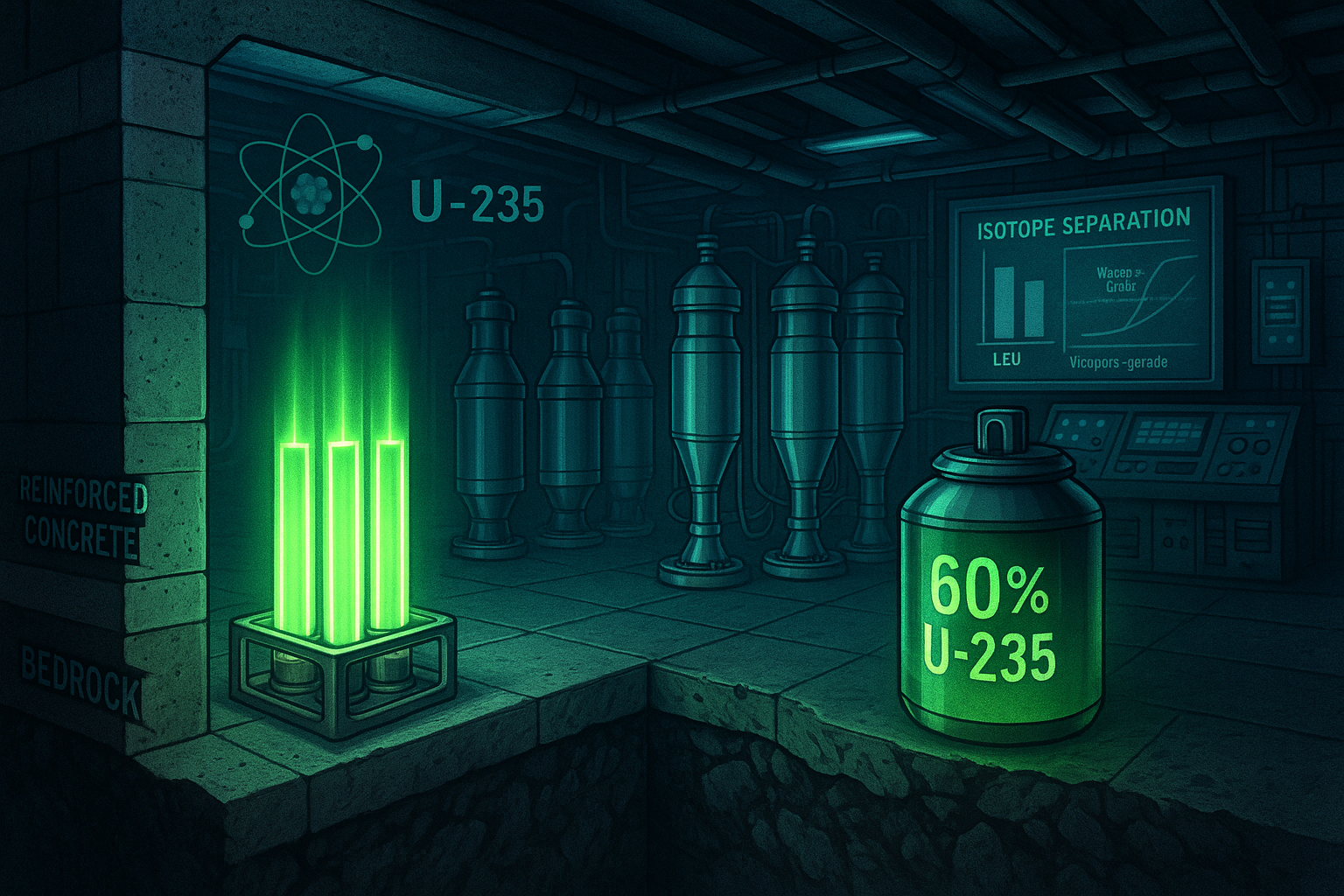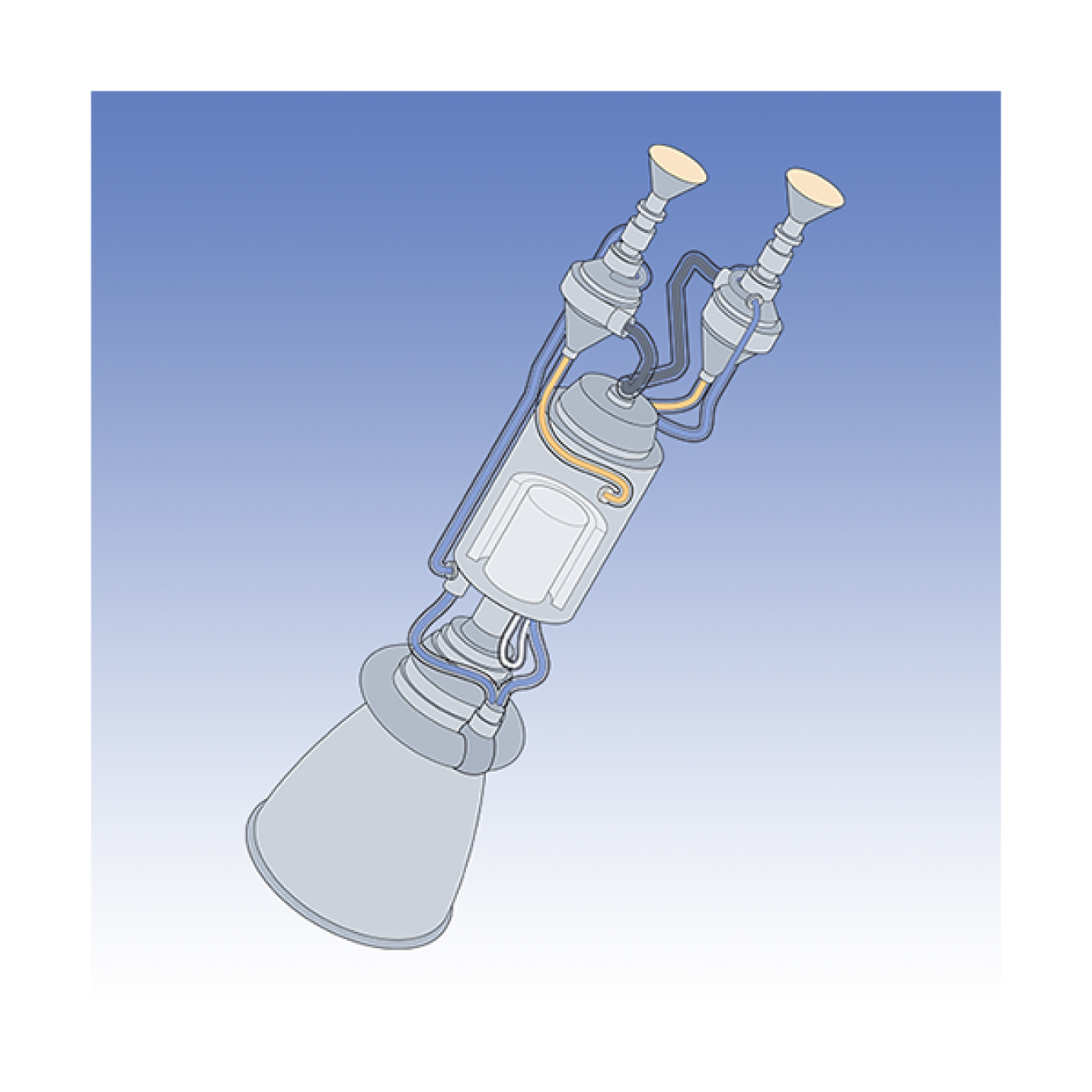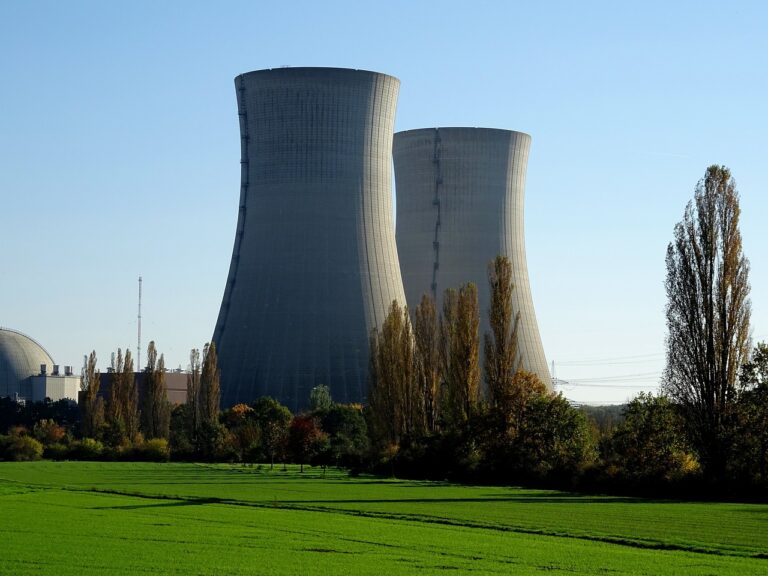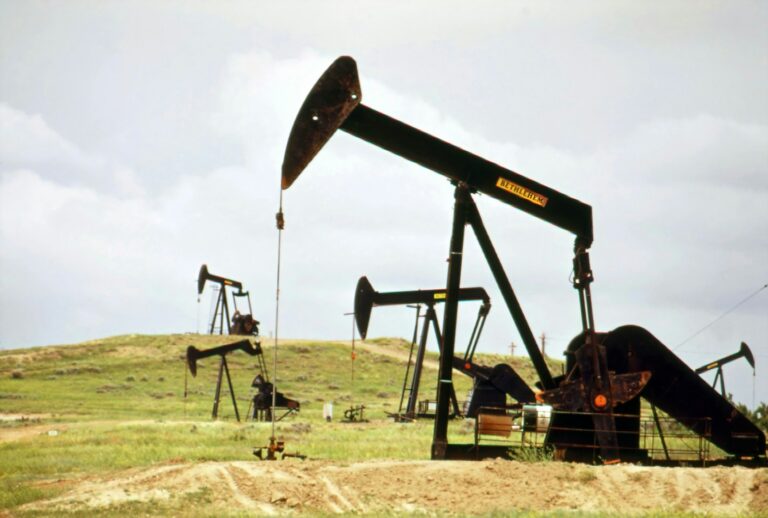Iran, Uranium, and the Fallout of Airstrikes: A Deep Dive into the Crisis
Recent U.S. and Israeli airstrikes on Iran’s nuclear sites have pushed the world closer to another major conflict—and brought a technical topic into the global spotlight: uranium enrichment. But what is enriched uranium, and why is it so important?
To understand why this matters, we need to break down the science, the history, and what happened in the skies over Iran in June 2025.
1. What Is Enriched Uranium—and Why Is It So Dangerous?
Uranium is a naturally occurring metal used as fuel in nuclear power plants. But it needs to be “enriched” before it can be used in a reactor—or worse, in a nuclear bomb.
The Basics:
- Natural uranium mostly contains a type called U-238, which doesn’t easily cause a nuclear reaction.
- Only 0.7% is U-235, which can be used for energy or weapons.
- Enrichment means increasing the percentage of U-235 by separating it from U-238. This is done using machines called centrifuges that spin uranium gas at high speed.
Types of Enriched Uranium:
| Type | U-235 Content | Used For |
|---|---|---|
| LEU (Low-Enriched) | 3–5% | Nuclear power plants |
| HALEU (High-Assay LEU) | 5–20% | New small reactors |
| HEU (Highly Enriched) | Over 20% | Research, submarines, weapons |
| Weapons-Grade | Over 90% | Nuclear bombs |
The more enriched the uranium is, the less you need to make a bomb.
2. Iran’s Nuclear Program: Peaceful Energy or Secret Weapons?
Iran started its nuclear program with U.S. help in the 1950s. But after the 1979 revolution, things changed. In the early 2000s, secret work suggested Iran was trying to build a bomb.
Key Points:
- Iran says its nuclear program is for energy and medicine.
- But inspectors found past work on bomb designs and hidden facilities.
- In 2015, Iran signed a deal (the JCPOA) with world powers to limit its uranium enrichment in exchange for lifting sanctions.
- When the U.S. left the deal in 2018, Iran restarted and expanded its program.
By 2025:
- Iran had 22 times more enriched uranium than allowed by the deal.
- It was enriching up to 60% U-235, very close to the 90% needed for a bomb.
- It had enough material for nine bombs, if further enriched.
3. The Airstrikes: What Happened and What Was Hit
From June 22–24, 2025, the U.S. and Israel launched Operation Midnight Hammer, bombing Iran’s key nuclear sites. These were precise, high-tech strikes aimed at halting Iran’s ability to make weapons.
Main Targets and Damage:
| Facility | What It Did | What Happened |
|---|---|---|
| Fordo | Underground uranium enrichment | Hit with 14 giant bunker-busting bombs; tunnels collapsed |
| Natanz | Main centrifuge site | Power systems destroyed; major damage |
| Isfahan | Uranium processing plant | Bombed by cruise missiles; wiped out |
| Karaj | Centrifuge factory | Hit earlier by Israeli strikes; production halted |
The U.S. used the GBU-57 “bunker buster,” a 30,000-pound bomb made to destroy underground bunkers like Fordo.
Did Iran Move Anything Before the Bombing?
Satellite images show Iran may have moved some material or equipment before the strikes. There were trucks and later the entrances to tunnels were covered with dirt—possibly to hide or protect what was inside.
The U.N.’s nuclear watchdog (IAEA) said there was no major radioactive leak, but warned of chemical dangers from uranium gas used in enrichment.
4. Why This Matters to the Whole World
1. Iran Could Still Build a Bomb—Quickly
Even with the damage, Iran still has:
- A large stockpile of enriched uranium
- Scientists and designs
- Experience building centrifuges
That means Iran could rebuild secretly and make weapons-grade uranium in a few weeks, if it chooses to.
2. Risk of a Nuclear Arms Race
If Iran gets close to building a bomb, other countries—like Saudi Arabia, Turkey, or Egypt—might try to do the same. That would increase the chances of a future nuclear conflict.
3. Rebuilding Will Be Hard – But Not Impossible
The airstrikes likely destroyed many centrifuges, but Iran’s nuclear knowledge wasn’t erased. If secret workshops survived, the program could restart quietly.
4. Health and Environmental Risks
Bombing uranium facilities can spread toxic uranium dust or chemical gas. It’s not like a nuclear bomb, but it can still harm workers or cleanup crews.
5. What Comes Next? The Geopolitical Fallout
World Reactions:
- U.S. and Israel: Defended the strikes as necessary to stop Iran from getting a bomb.
- Europe: Urged both sides to return to diplomacy.
- Russia and China: Called the attacks “illegal” and supported Iran in U.N. discussions.
Iran’s Possible Responses:
- Military retaliation: Already launched missiles at Israel.
- Block oil routes: Could try to shut down the Strait of Hormuz, affecting global oil prices.
- Return to talks: Iran may consider negotiations—if it gets sanctions relief.
- Secret rebuilding: Past actions suggest Iran may try to restart its program in hidden locations.
Knowledge Can’t Be Bombed
The airstrikes may have destroyed buildings and machines, but they didn’t destroy Iran’s nuclear knowledge. As IAEA head Rafael Grossi said:
“You can bomb facilities. You cannot bomb expertise.”
This crisis is a reminder of the dangers of nuclear technology: the same uranium that can light up cities can also be turned into weapons that destroy them.
Whether Iran chooses peace or continues down the nuclear path remains uncertain – but the world is watching more closely than ever.







